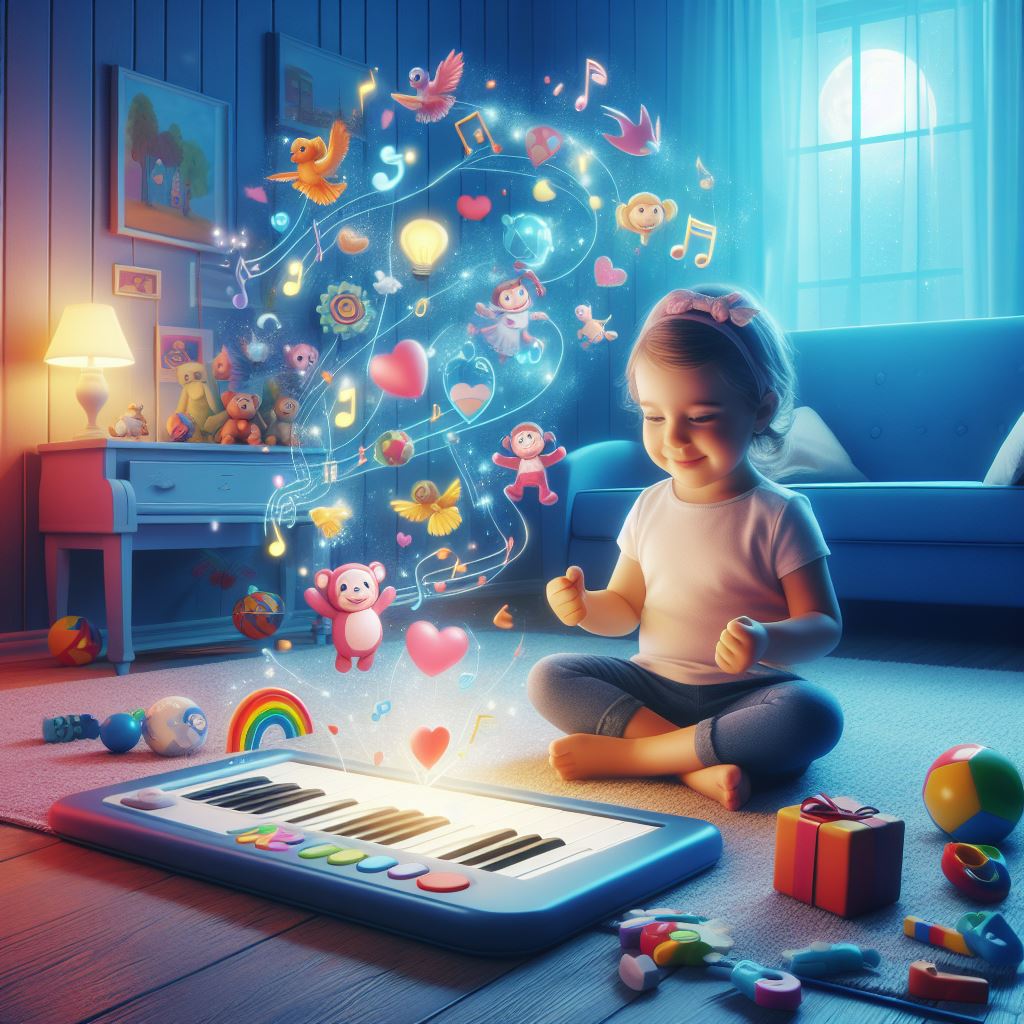
If you’re a parent navigating the labyrinth of early childhood development, you’ve likely wondered about the best ways to support your child’s emotional growth. It’s a colorful world out there, and you want to ensure your little one is equipped with the emotional literacy needed to explore it fully.
Understanding Emotional Intelligence Through the Lens of Music
Music serves as a powerful medium for developing and enhancing emotional intelligence due to its ability to evoke and convey a wide range of emotions. When individuals engage with music, whether through listening, performing, or creating, they are presented with opportunities to explore and understand their own emotions in a safe and non-judgmental space. Music provides a platform for individuals to express complex feelings that they may struggle to articulate verbally. For example, someone may find solace in a melancholic melody or feel uplifted by an energetic rhythm, allowing them to connect with and regulate their emotions more effectively.
Music has a unique capacity to foster empathy and understanding towards others. When we listen to music, we often resonate with the emotions expressed by the composer or performer, cultivating a sense of shared experience and connection. This shared emotional resonance promotes empathy by encouraging individuals to recognize and validate the emotions of others, thereby strengthening interpersonal relationships and social bonds.
In addition to its emotional benefits, music also stimulates cognitive processes associated with emotional intelligence, such as self-awareness, self-regulation, and social awareness. Analyzing musical compositions requires attentiveness to subtle variations in tone, tempo, and dynamics, which can enhance individuals’ ability to perceive and interpret emotional cues in both musical and interpersonal contexts.
Music-Based Interventions
Music-based interventions offer a multifaceted approach to emotional development that extends beyond simply enjoying a melody. Through music-based interventions, individuals can learn to discern and label various emotions based on the qualities of the music they encounter.
In this context, musical intelligence transcends the ability to play an instrument or sing in tune. It encompasses the capacity to decode the emotional nuances embedded within musical compositions, enabling individuals to gain insight into their own emotional experiences and those of others. Through active engagement with music, individuals develop a heightened sensitivity to the subtle shifts in tone, rhythm, and harmony that mirror the intricacies of human emotion.
Music-based interventions serve as a powerful tool for promoting emotional literacy and fostering social-emotional learning. By exploring the emotional landscapes depicted in music, individuals can expand their emotional vocabulary and cultivate greater self-awareness and empathy. This newfound emotional fluency extends beyond the music, permeating daily interactions and relationships.
The Rhythm of Emotion Regulation
Emotional regulation is a vital skill for children as they traverse the complex landscape of their emotions. Music and rhythm serve as invaluable tools for introducing and honing these skills in a structured yet adaptable manner. Through practices like mindfulness with music, children are invited to immerse themselves fully in the present moment, attuning to the nuances of their emotions as they synchronize with the rhythms and melodies surrounding them.
Mindfulness through music encourages children to embrace a non-judgmental awareness of their emotions, allowing them to observe and acknowledge their feelings without fear or resistance. As they engage with the rhythm and flow of the music, children learn to recognize the transient nature of emotions, understanding that just as musical melodies evolve and change, so too do their emotional experiences.
Music provides a safe and supportive environment for children to explore various strategies for emotional regulation. Whether through gentle melodies that soothe frayed nerves or upbeat rhythms that inspire joy and vitality, music offers a diverse array of emotional cues and responses for children to explore and integrate into their own coping mechanisms.
Dancing Through Emotional Development
Movement is a main component of emotional development that should not be overlooked. Kinesthetic learning, which involves learning through physical movement, plays a fundamental role in nurturing emotional intelligence. Dance therapy harnesses this principle by providing children with a medium to articulate emotions that may be challenging to express verbally.
The kinetic nature of dance enables children to engage with emotions on a visceral level, transcending linguistic barriers and accessing deeper layers of emotional experience. As they move their bodies in sync with the music, children learn to embody and express a diverse range of emotions, from joy and excitement to sadness and vulnerability. Through this embodied exploration, children develop a heightened awareness of their own emotional landscape, learning to navigate and regulate their feelings with greater ease and fluidity.
Dance facilitates meaningful interactions and shared experiences, fostering a sense of community and belonging among participants. As children engage in collaborative movement sequences, they learn to attune to the emotional cues and expressions of their peers, strengthening their capacity for empathy and interpersonal connection.
The integration of music further enriches the dance experience, providing a rhythmic framework that guides and energizes movement. The symbiotic relationship between music and movement enhances children’s ability to recognize and relate to emotions, as they synchronize their movements with the emotional cadences of the music.
Practical Steps to Integrate Music and Movement
So how do we incorporate these insights into our daily routines and educational environments? Here are a few practical tips:
Create a Musical Library. Include songs that express a wide range of emotions. Use these songs as a springboard for discussion about feelings, asking questions like, “How does this song make you feel?”
Instrument Exploration. Allow children to experiment with different musical instruments. This hands-on experience can be incredibly empowering and enlightening in their emotional journey.
Dance and Freeze. A fun activity that combines music and movement. Play a song and encourage your child to dance freely, then pause the music unexpectedly. This game not only brings joy but also teaches emotional control and anticipation.
Mindfulness through Music. Introduce activities that combine music with breathing or relaxation exercises, fostering an atmosphere of mindfulness and present-moment awareness.
Expressive Artworks. After a musical session, encourage your child to draw or paint what they felt during the music. This bridges musical expression with visual art, deepening their emotional understanding and literacy.
Family Dance Parties. Never underestimate the power of a family dance-off. It’s a fun way to bond, share emotions, and show that expressing feelings through movement and music is a positive and shared experience.
Harmonizing Emotions and Intelligence
The intersection of music, movement, and emotional intelligence offers a rich field of exploration and opportunity for children. As caregivers, educators, and parents, fostering an environment where musical expression and kinesthetic learning are part of daily life can make a significant difference in a child’s emotional development. By embracing the principles of music therapy, dance therapy, and music psychology, we’re guiding them through the complexity of their emotions, teaching them to express and understand those of the people around them.
The role of music and movement in developing emotional intelligence is profound and multifaceted. Through musical expression, dance, rhythm, and music-based interventions, we provide children with the tools to navigate their emotional worlds with empathy, understanding, and resilience. So, let the music play and the dance floor be one of learning and growth. After all, in the symphony of life, emotional literacy is one of the most beautiful melodies we can teach our children to play.

